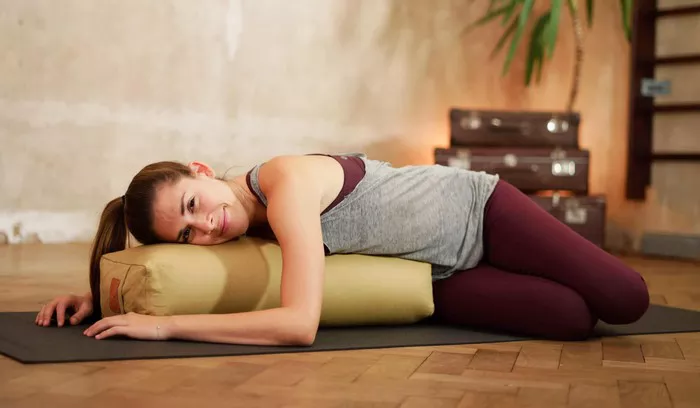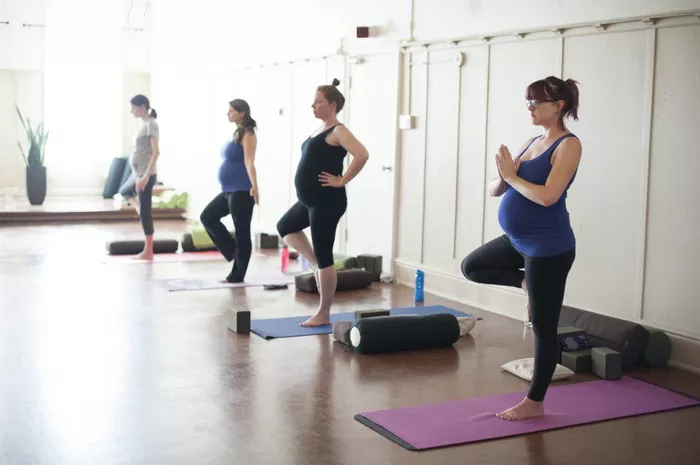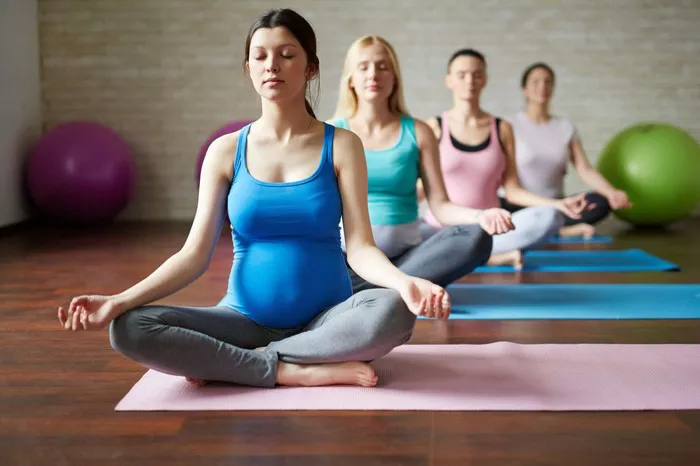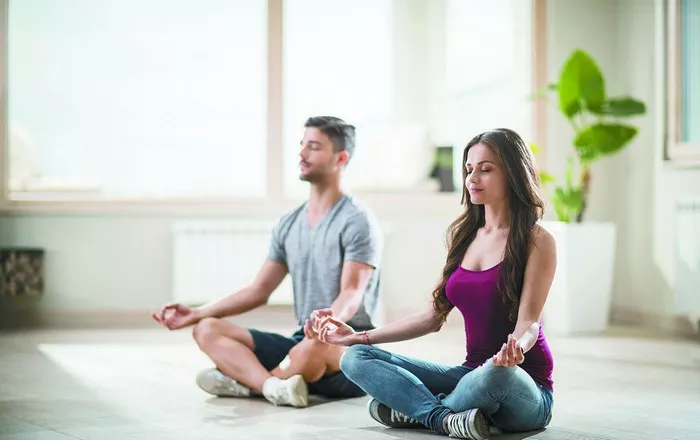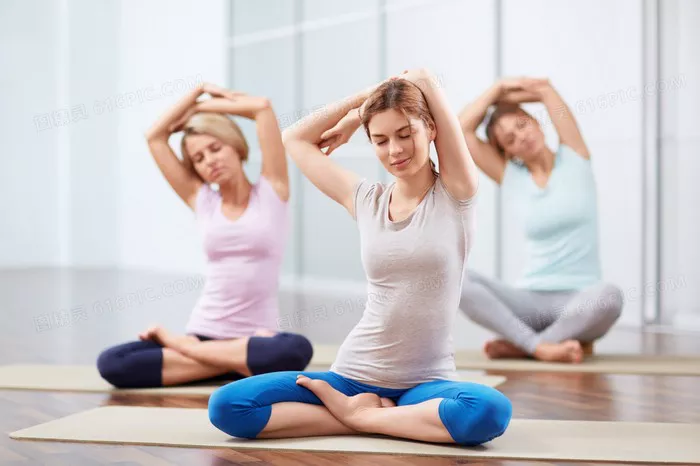Yoga, a profound discipline that has been practiced for thousands of years, offers a variety of paths, each designed to cultivate balance, strength, and peace of mind. While all types of yoga share the ultimate goal of self-realization and spiritual growth, the methods and techniques vary. In this article, we will explore the seven primary types of yoga, highlighting their unique characteristics, benefits, and the individuals they best serve.
1. Hatha Yoga: The Foundation of All Yoga Practices
Hatha yoga is often seen as the gateway to other forms of yoga. The term “Hatha” comes from the Sanskrit words “Ha” meaning “sun” and “Tha” meaning “moon,” which represent the dual nature of existence. This type of yoga is designed to bring balance between the body and mind, aligning physical and mental energy through postures (asanas) and breath control (pranayama).
Characteristics of Hatha Yoga
Hatha yoga is typically slower-paced compared to more dynamic forms of yoga like Vinyasa or Ashtanga. In a typical Hatha yoga class, practitioners hold poses for a longer duration, focusing on alignment, flexibility, and strength. Hatha yoga classes may include pranayama techniques (breathing exercises) and meditation to promote mindfulness and relaxation.
Benefits of Hatha Yoga
Improved flexibility: Through regular practice, muscles are lengthened and joints become more mobile.
Increased strength: Holding poses helps build muscle strength and endurance, especially in the core, arms, and legs.
Stress relief: The combination of breathwork and slow, intentional movements helps calm the mind and reduce stress.
Better posture: Many Hatha yoga poses promote spinal alignment, which can lead to improved posture in daily life.
Who Should Practice Hatha Yoga?
Hatha yoga is suitable for all levels of practitioners, especially beginners. Its slower pace and emphasis on foundational postures make it an excellent starting point for those new to yoga or those recovering from injury. It’s also ideal for anyone looking to de-stress and unwind.
2. Vinyasa Yoga: Flowing with the Breath
Vinyasa yoga is one of the most popular forms of yoga in the modern world. It is a dynamic and flowing style that connects breath with movement. “Vinyasa” means “to place in a special way,” referring to the seamless transition from one posture to another.
Characteristics of Vinyasa Yoga
In a Vinyasa class, practitioners move fluidly from one pose to the next, coordinating their breath with their movements. The flow of postures can vary greatly, with each class offering a unique sequence of poses. Vinyasa is known for its creative sequencing, allowing instructors to adapt and modify the practice to suit the needs of the group.
Vinyasa yoga typically includes sun salutations, standing poses, balance poses, and seated postures. The pace can range from moderate to vigorous, depending on the instructor’s style.
Benefits of Vinyasa Yoga
Cardiovascular fitness: The continuous flow of movements elevates the heart rate and improves cardiovascular health.
Strength and flexibility: Like Hatha yoga, Vinyasa improves both strength and flexibility, particularly through dynamic poses.
Mental clarity: The focus on synchronizing breath with movement fosters mental focus and reduces mental clutter.
Detoxification: The continuous movement helps release toxins from the body through sweating.
Who Should Practice Vinyasa Yoga?
Vinyasa yoga is a great choice for those who enjoy a more active, fast-paced practice. It’s particularly beneficial for individuals looking to build endurance, improve cardiovascular health, or deepen their mind-body connection through dynamic movement. Beginners can also enjoy Vinyasa as long as the class is taught at a slower pace.
3. Ashtanga Yoga: The Eight-Limbed Path
Ashtanga yoga, founded by Sri K. Pattabhi Jois in the 20th century, is a rigorous and structured style of yoga. The word “Ashtanga” translates to “eight-limbed path,” referencing the eight components of yoga outlined in the Yoga Sutras of Patanjali.
Characteristics of Ashtanga Yoga
Ashtanga yoga involves a specific sequence of postures performed in a set order. The practice follows a traditional series, consisting of six sequences that range from beginner to advanced levels. The sequence includes sun salutations, standing poses, seated poses, backbends, and finishing poses, all linked together through breath and movement.
Ashtanga is a physically demanding practice, often done in a heated room to enhance flexibility and detoxification. It requires dedication to practice the same sequence regularly, leading to greater mental discipline and physical stamina.
Benefits of Ashtanga Yoga
Strength and stamina: Ashtanga’s demanding nature helps build both muscular strength and mental endurance.
Improved flexibility: Over time, practitioners notice increased flexibility in the hamstrings, hips, and spine.
Detoxification: The heat and intense physicality of the practice lead to sweating, which purges toxins from the body.
Mental focus: The repetitive nature of Ashtanga helps cultivate focus and discipline, both in yoga practice and in daily life.
Who Should Practice Ashtanga Yoga?
Ashtanga yoga is ideal for individuals who are physically fit and looking for a challenging, structured practice. It requires a commitment to learning and performing the specific series, so it’s not recommended for beginners or those with physical limitations. However, practitioners can always modify the sequences to suit their abilities.
4. Kundalini Yoga: Awakening the Inner Energy
Kundalini yoga is a spiritual and energetic practice designed to awaken the dormant energy within each person. The word “Kundalini” refers to a coiled energy at the base of the spine, often visualized as a serpent. In this tradition, the goal is to awaken this energy and move it up through the chakras (energy centers) of the body, ultimately achieving spiritual enlightenment.
Characteristics of Kundalini Yoga
Kundalini yoga combines asanas, breathwork (pranayama), chanting, and meditation. It is an intense and often very spiritual practice, with a focus on awakening the body’s latent energy. Breath control, known as “breath of fire,” is a key aspect of this practice, which helps to ignite the inner energy.
Kundalini sessions may also include mantra chanting, which involves the repetition of sacred words or sounds to help open the mind and spirit. The practice can be both physically demanding and mentally transformative.
Benefits of Kundalini Yoga
Emotional healing: By tapping into deep energy reserves, Kundalini yoga helps to release stored emotions and trauma.
Spiritual growth: Kundalini yoga focuses on spiritual awakening, which can lead to greater clarity and self-awareness.
Increased energy: The practice can stimulate vitality and increase overall energy levels.
Enhanced mental clarity: The combination of breathing, chanting, and meditation enhances mental focus and reduces anxiety.
Who Should Practice Kundalini Yoga?
Kundalini yoga is best suited for those seeking a spiritual and transformative experience. While physically challenging, it is also deeply meditative and reflective, making it suitable for individuals interested in personal growth and inner peace. It is also beneficial for those looking to cultivate emotional resilience and mental clarity.
5. Yin Yoga: A Restorative and Meditative Practice
Yin yoga is a slow-paced, passive practice that targets the connective tissues of the body, such as ligaments, joints, and fascia. Unlike more dynamic styles of yoga, Yin encourages long-held poses, sometimes for 3 to 5 minutes or longer, to allow deep stretching and release.
Characteristics of Yin Yoga
In Yin yoga, practitioners hold seated or lying postures for extended periods of time, allowing the body to gradually stretch and release tension. The emphasis is on letting go of muscle engagement and relaxing deeply into each pose.
Yin yoga is often paired with meditation, encouraging practitioners to cultivate mindfulness and inner stillness. The practice is calm and introspective, offering a contrast to the more physically demanding styles of yoga.
Benefits of Yin Yoga
Deep relaxation: The long-held postures promote relaxation and stress relief, allowing the body to release tension.
Increased flexibility: Yin yoga targets deep connective tissues, leading to enhanced joint mobility and flexibility.
Improved circulation: The long-held stretches increase blood flow to the joints and connective tissues, aiding in recovery.
Mental clarity: The practice of stillness cultivates mindfulness and emotional calm.
Who Should Practice Yin Yoga?
Yin yoga is suitable for all levels of practitioners, especially those seeking a restorative practice. It is particularly beneficial for individuals who are experiencing stress or chronic tension, as it offers a gentle, meditative approach to healing.
6. Restorative Yoga: Healing and Rejuvenation
Restorative yoga is a gentle and therapeutic form of yoga focused on relaxation and healing. It involves the use of props such as blankets, bolsters, and blocks to support the body in comfortable, passive poses.
Characteristics of Restorative Yoga
In restorative yoga, poses are held for an extended period with minimal movement. The goal is to activate the parasympathetic nervous system, encouraging deep rest and healing. Each posture is designed to release tension and promote a sense of calm and relaxation.
Restorative yoga classes are often taught in a quiet, peaceful environment with soft music, candles, and soothing aromas to create a serene atmosphere.
Benefits of Restorative Yoga
Deep relaxation: The practice induces a state of profound rest and relaxation, helping to reduce stress and anxiety.
Muscle recovery: Restorative yoga supports the recovery of fatigued muscles and promotes healing.
Improved sleep: By calming the nervous system, restorative yoga can improve the quality of sleep.
Emotional balance: The gentle nature of the practice helps to soothe emotional turmoil and create a sense of inner peace.
Who Should Practice Restorative Yoga?
Restorative yoga is ideal for individuals seeking a calming and therapeutic practice. It is particularly beneficial for those recovering from injury, illness, or emotional stress. Beginners, seniors, or anyone looking for a gentle way to unwind will find restorative yoga soothing and accessible.
7. Bhakti Yoga: The Path of Devotion
Bhakti yoga is the path of devotion and love, focusing on cultivating a deep connection with the divine. “Bhakti” means “devotion” or “love,” and this practice emphasizes surrendering to a higher power through prayer, chanting, and selfless service.
Characteristics of Bhakti Yoga
Bhakti yoga is centered around the practice of devotion. This can take many forms, including chanting mantras, singing hymns, participating in religious rituals, or engaging in selfless acts of service. The practice is about expressing love and devotion through action and intention.
The essence of Bhakti yoga is to surrender the ego and open the heart to the divine presence, whether that be experienced as God, the universe, or the inner self.
Benefits of Bhakti Yoga
Cultivation of love: Bhakti yoga fosters a deep sense of love, compassion, and devotion.
Emotional healing: The practice helps to heal emotional wounds by focusing on love and service.
Spiritual awakening: Bhakti yoga encourages connection with the divine and the development of a deeper spiritual practice.
Increased inner peace: By focusing on devotion, practitioners often experience a sense of tranquility and fulfillment.
Who Should Practice Bhakti Yoga?
Bhakti yoga is ideal for those who are drawn to spiritual devotion and service. It is perfect for individuals who wish to deepen their connection with the divine or the universe, through love, prayer, and acts of kindness.
Conclusion
The seven types of yoga each offer a distinct path toward self-awareness, physical wellness, and spiritual growth. Whether you are drawn to the physical challenges of Ashtanga, the meditative calm of Yin yoga, or the deep devotion found in Bhakti yoga, there is a yoga practice to suit every individual. The key is to find the path that resonates most with you, allowing you to experience the full range of benefits that yoga has to offer, from physical health to emotional balance and spiritual fulfillment.
Related Topics:






